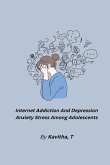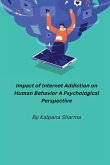Although depression rates increase rapidly in adolescence, the mechanisms behind this development are not fully understood. This Book examined the role of several risk factors for adolescent depression with a focus on risk-taking, reward-seeking, early childhood temperament and social interactions. Two samples were used across four empirical papers. First, a sample of behaviourally inhibited (BI) and uninhibited (BUI) preschool children (n = 70). Second, a sample of adolescents initially recruited and classified at BI and BUI at age 4. Paper 1 examined how the temperamental constructs of BI and effortful control related to risk-taking. Effortful control, but not BI, at age 4 was related to reward focused risk-taking on the Balloon Analogue Risk Task (BART). Paper 2 examined the association between BI in childhood, risk-taking and depressive symptoms in adolescence, including how risk-taking as measured by the BART may present a potential risk pathway. An interaction between BI and risk-taking was associated with depressive symptoms in early adolescence. Due to the salience of peers in adolescence and the role that peer interactions might play in risk for adolescent depression, Paper 3 further explored risk-taking by developing a novel measure of social risk-taking and examining the association between scores on this measure and depressive symptoms over a 6-month period. A bidirectional relationship between social risk-taking and depressive symptoms was found. In addition, social acceptance partially mediated the relationship between depressive symptoms and social risk-taking. Finally, Paper 4 focused on reward-seeking using an adapted effort-reward task. No overall difference was found between early adolescents with or without symptoms of depression in their motivation to view a rewarding cartoon. Nevertheless, the task shows promise for future work in this area. Taken together, the results of this Book present unique information about adolescent depression and the risk factors of temperament, risk-taking, reward-seeking and social risktaking.
Hinweis: Dieser Artikel kann nur an eine deutsche Lieferadresse ausgeliefert werden.
Hinweis: Dieser Artikel kann nur an eine deutsche Lieferadresse ausgeliefert werden.








